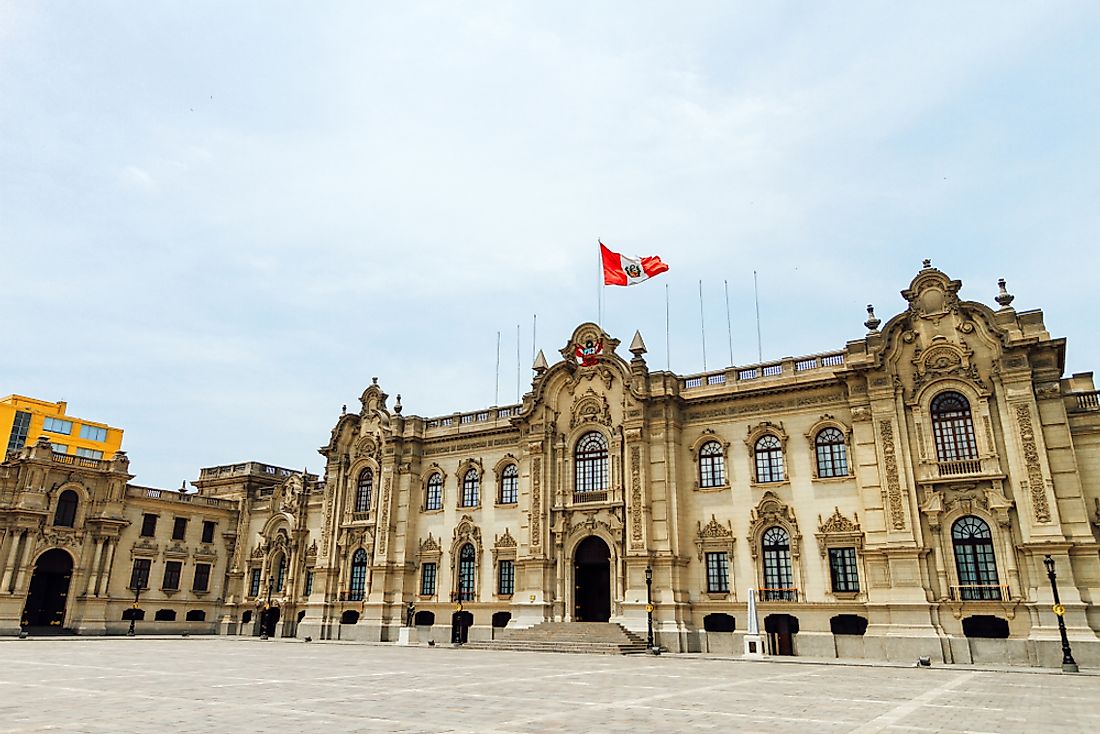What Type Of Government Does Peru Have?

An Overview Of The Government Of Peru
Peru is a presidential republic with three branches of government. It follows the principle of separation of powers and independence of its three branches: the executive, legislature, and the judiciary.The president is the highest representative of the executive while the National Congress is Unicameral. The members are elected every five years through a universal, secret and direct vote. The current government system was created by the Constitution of Peru in 1993.
The Executive Branch Of The Government Of Peru
The President is the head of state and head of government who is tasked with the responsibility of appointing the Prime Minister and the Cabinet or council of ministers among others. The law does not allow the President to contest two successive elections. Close relatives are also barred by law from succeeding the President. The executive branch and the legislature may put forth a law. After the Congress has passed it, the President has to proclaim giving it the force of law. Some of the requirements to be a cabinet minister include current citizenship to the country, 25 years of age and above and being born in the country. Members of the Congress, the National Police and the Armed Forces are also allowed by law to become members of the Cabinet. They are required to perform the functions assigned to the offices by the constitution and the president.
The Legislature Of Peru
The legislative power of the country is vested in the 130-member body. They are elected every five years in office on proportional representation. The candidates must be Peruvian citizens, have attained or passed 25 years of age and must have never had their voting rights suspended for any reason.Currently, the members meet at a center located in the Historical Center of Lima. The Congress works through Departmental Committees that are tasked with monitoring essential government functions. Some of these departments include Foreign Commerce and Tourism, Agrarian, Science, Innovation and Technology, and National Defense among others. The leadership of the Congress is under its President. He is assisted by three deputies. He has the power to dissolve the Congress. Whenever this happens, the current term of the Presidency is interrupted. The Congress is made up of members of several political parties.
Judiciary Of Peru
It is the branch of government that interprets and applies the laws of the country. It is also tasked to ensure justice to all the citizens of the country by providing an agreeable way of dispute resolution. The system is made up of a hierarchical system of courts with the Supreme Court at the apex. The Supreme Court has 16 judges each charged with three specific divisions. They are the criminal, civil, constitutional and the social sector. Next to it are the 28 superior courts that more or less conform to the 25 regions of the country. Next to it are the 195 courts of trial which have jurisdictions over each province. The lowest courts in the system are called courts of peace that have control over each district. They are tasked with mediation and dispute resolution.
Elections In Peru
Peru is a multiparty state with many political parties and the last general election in April 2016, the popular force won by popular vote taking 73 of the 130 seats in the congress. The Peruvians for change were second with 18 seats and the Broad front won 20 seats. For the presidential election Fujimori of Popular Force won with 40% of the popular votes, but was short of the 50% required to evade the second round of voting. The second round was between Fujimori and Pedro Pablo of the Peruvians for Change. Those who were opposed to Fujimori supported Pablo who won by a slim margin and he was sworn in on July 28th, 2016. Next elections will be held in April 2021.











